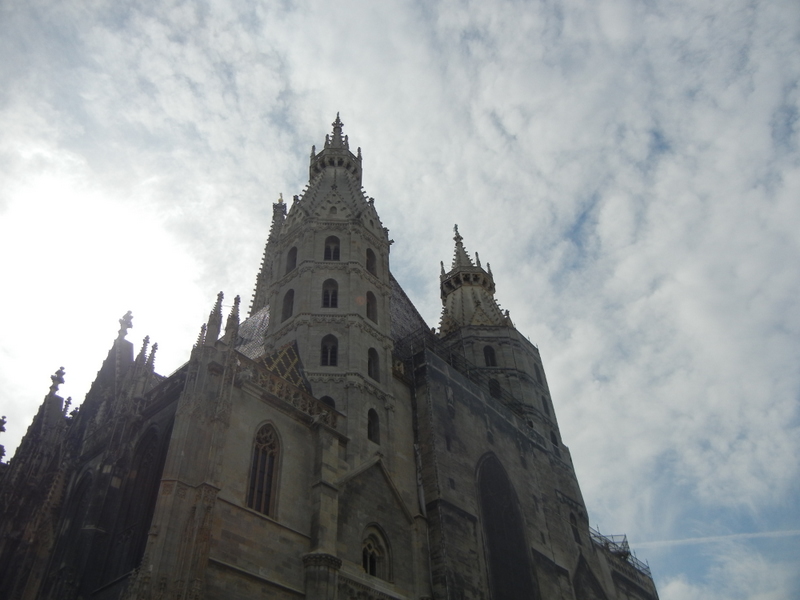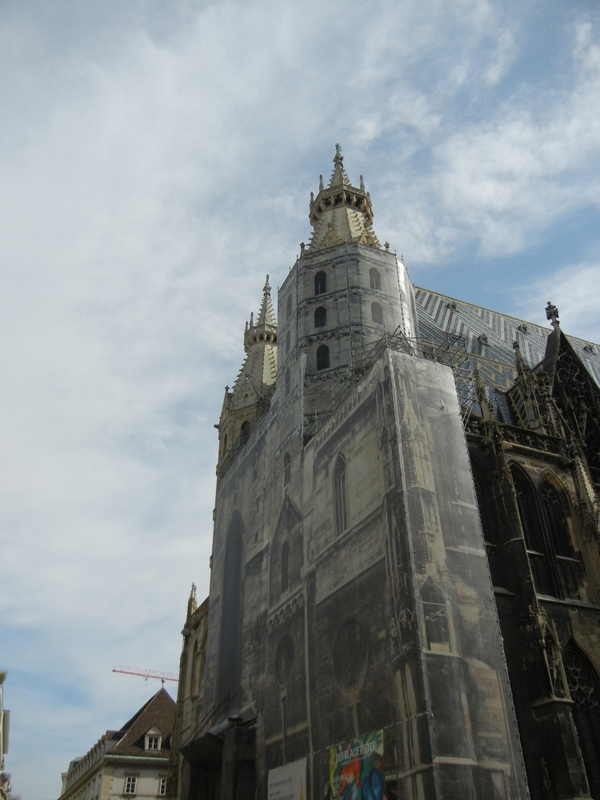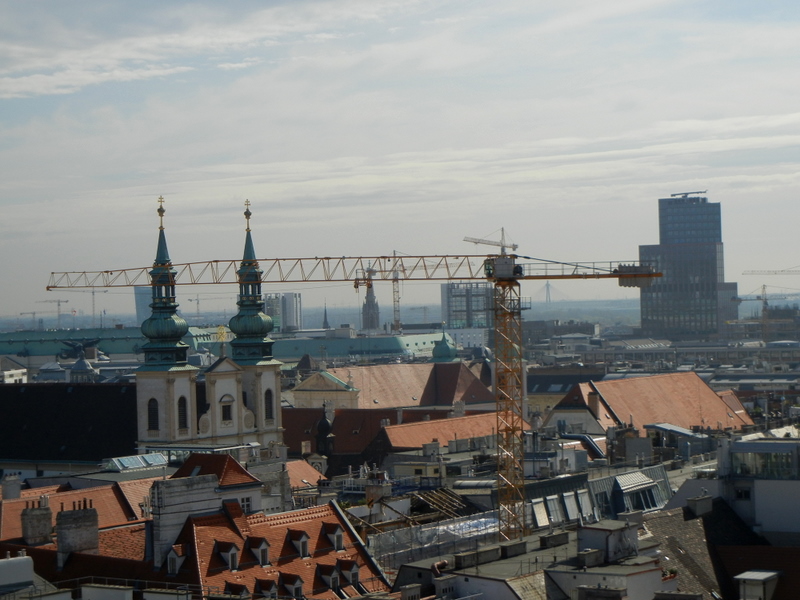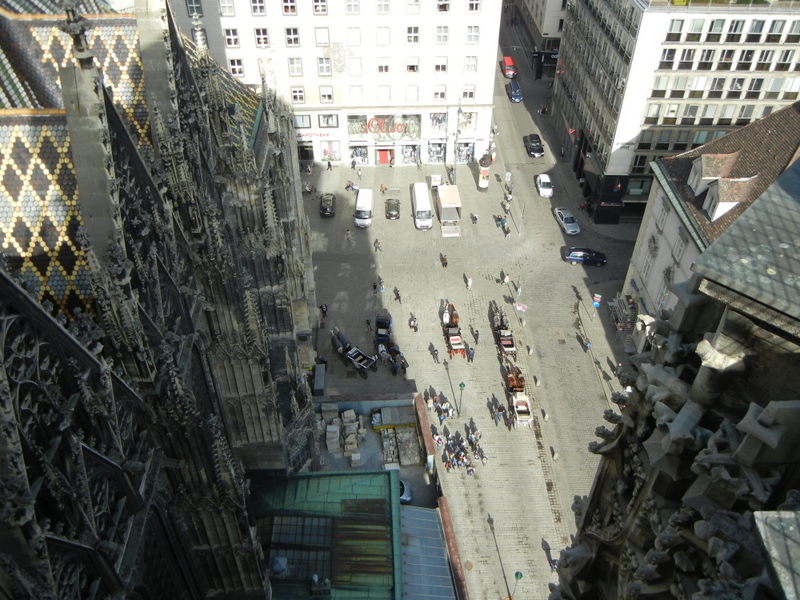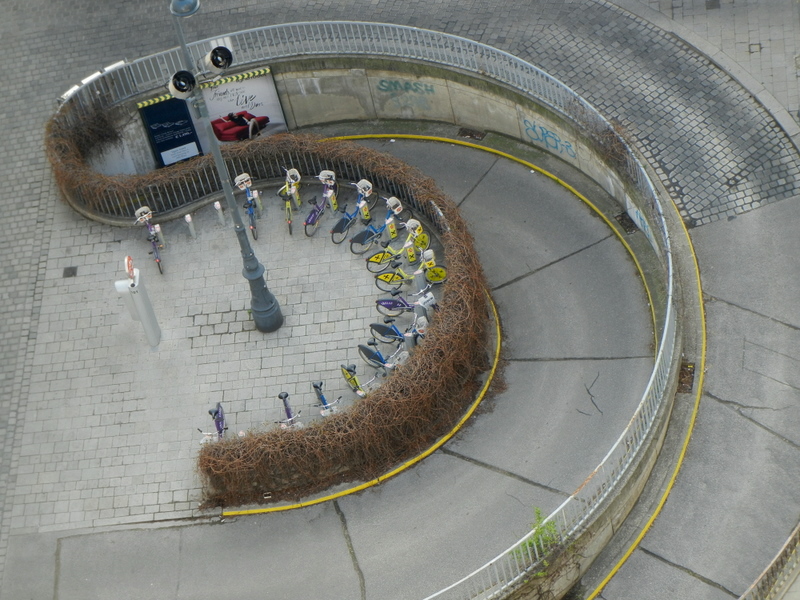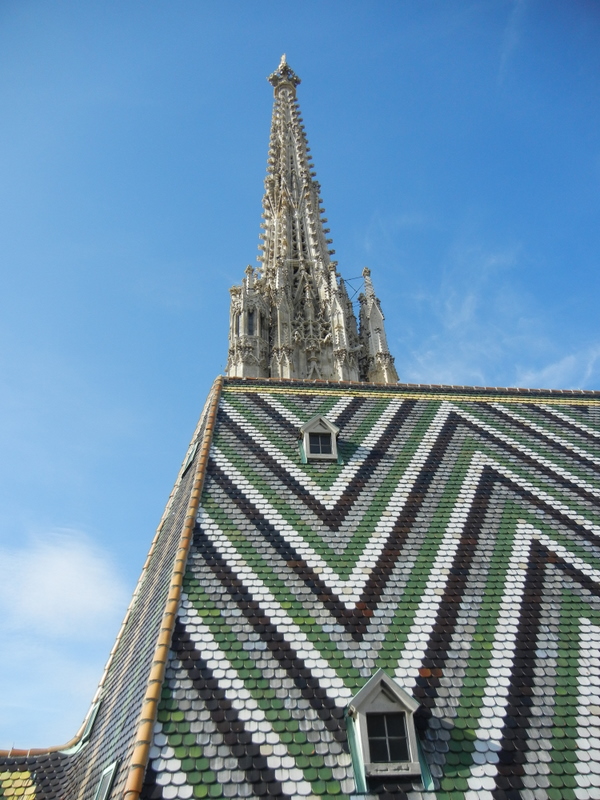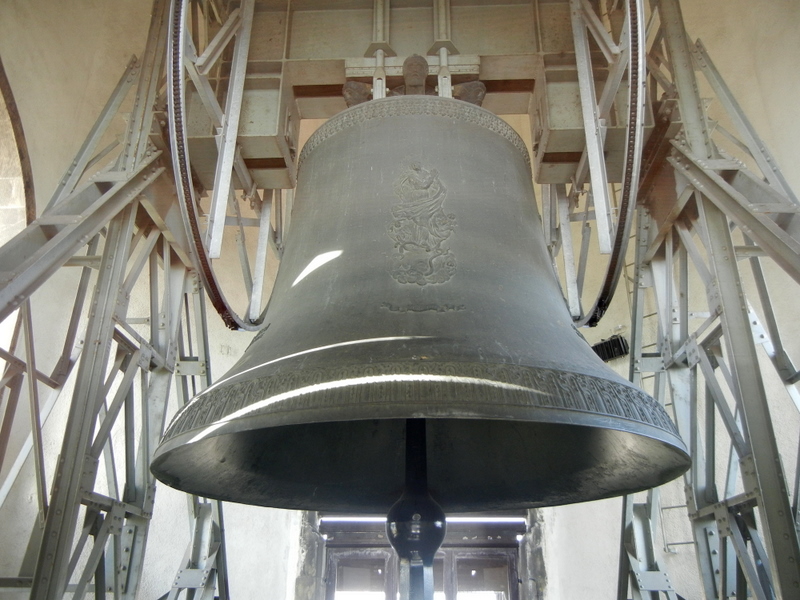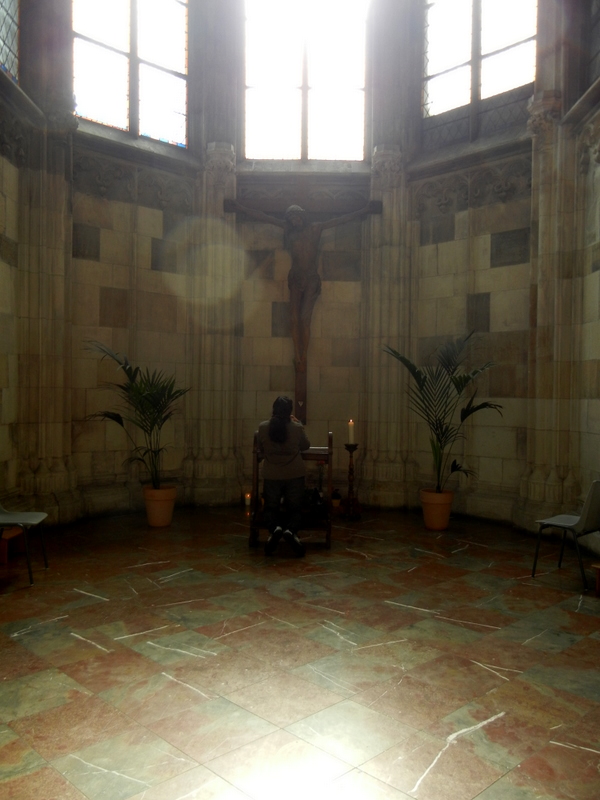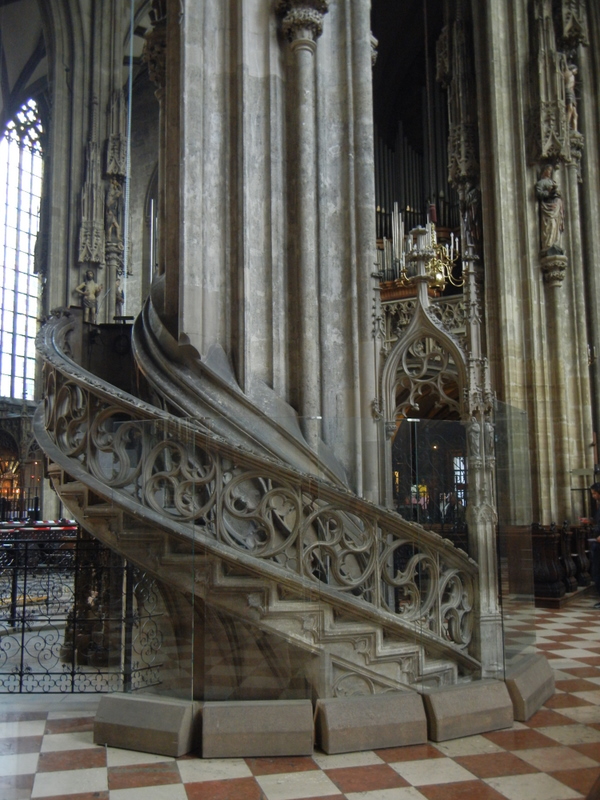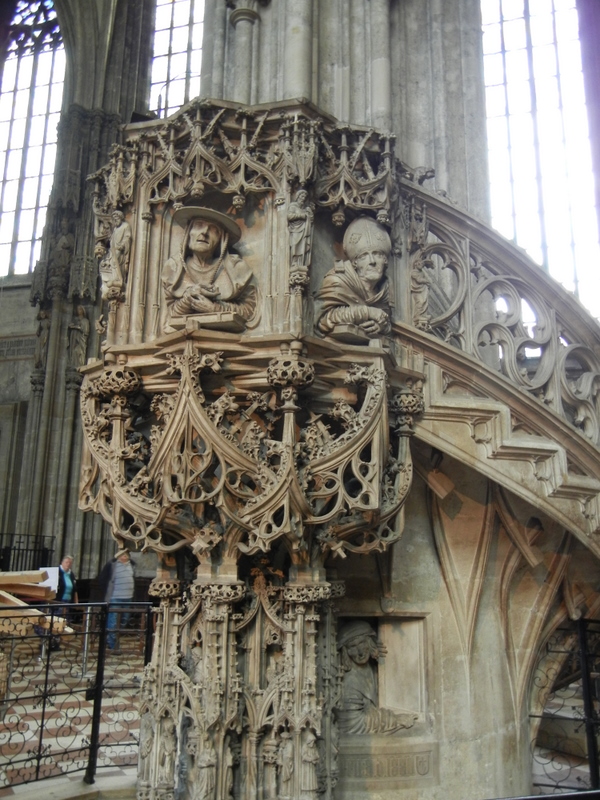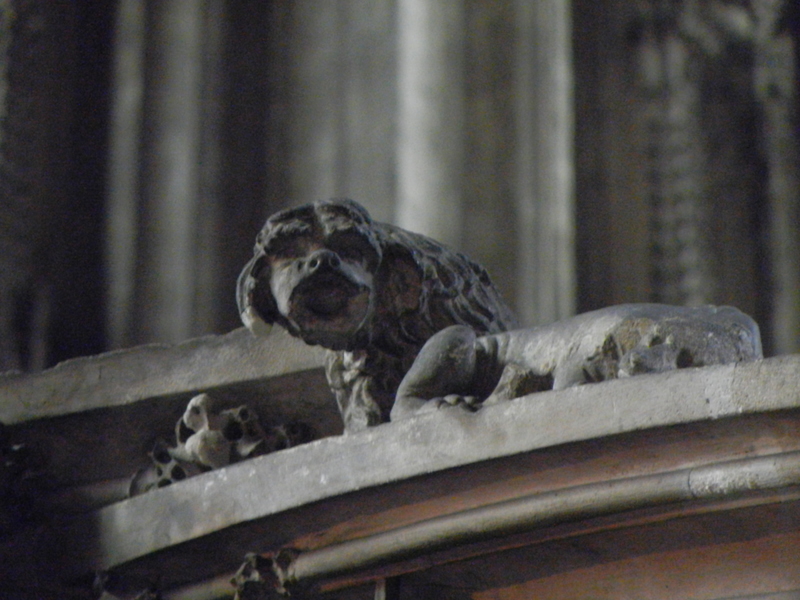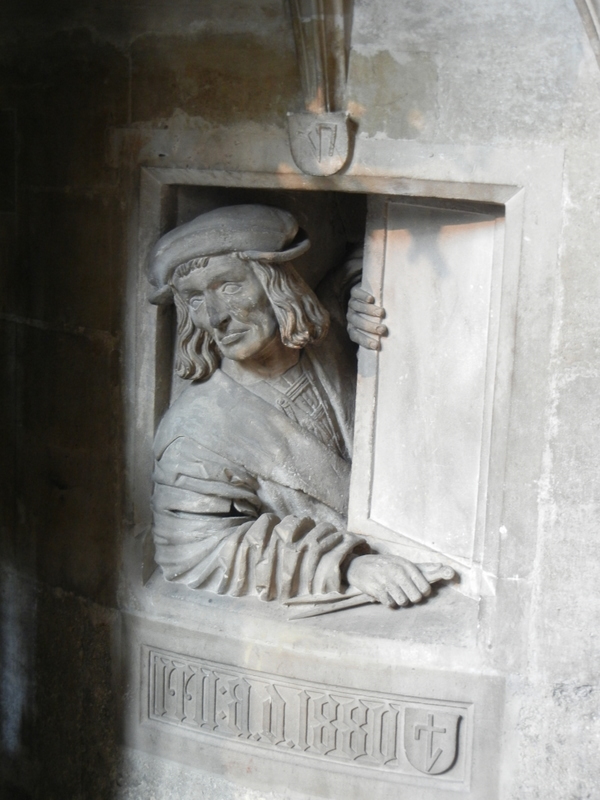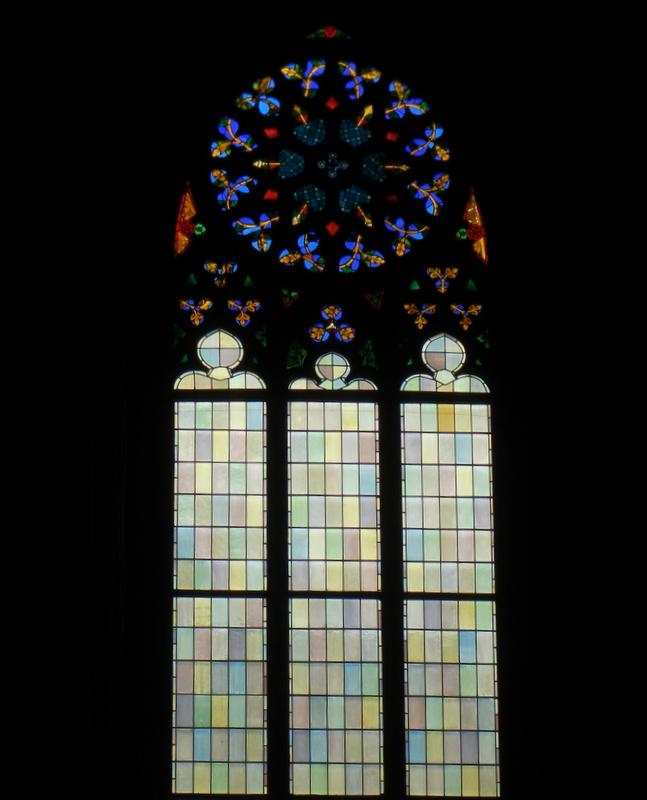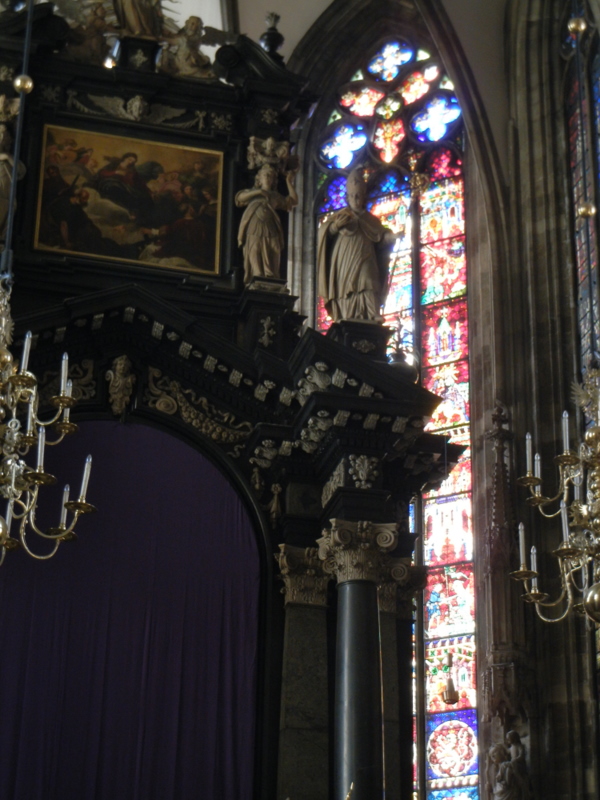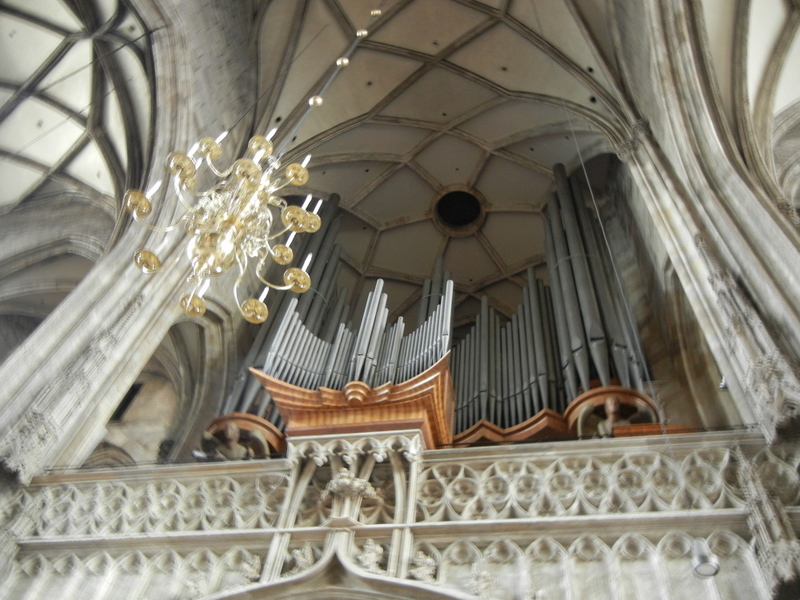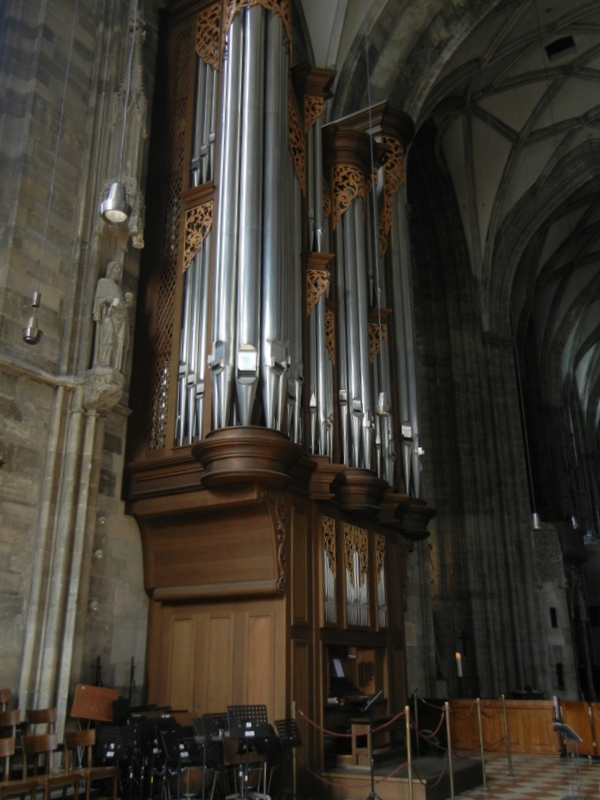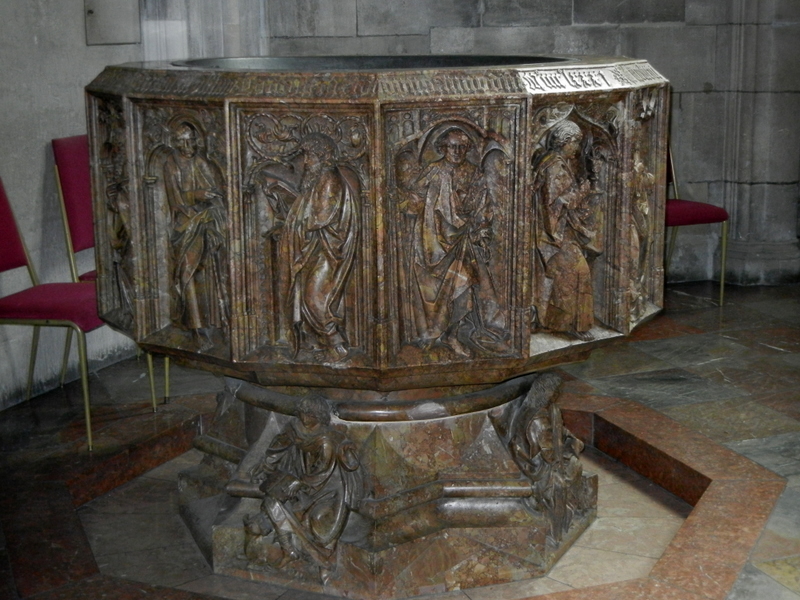Once we got settled in our hotel in Vienna (the afternoon of April 6), no small feat in itself (another story), we were able to relax a little and start to enjoy all that is Vienna. Our hotel was right off the Grauben, Vienna’s big shopping street. It’s a wide pedestrian walkway (except for the early morning delivery hours and then watch out!), and with the warm weather Austria has been having it was packed! Or maybe it is always that way. Lots of tourists, lots of regular Viennese, all milling about.
One of the charms of the street are the buskers. We saw everything from classical musicians to very bad break dancing. Definitely NOT candidates for So You Think You Can Dance! This group, however caught our fancy. Have a listen and see what you think!
 |
| From Graz-April 6 2011-to Vienna = train accident and requiem |
They were certainly lively and collected a lot of coins!
Many of the people on the Grauben were headed to Stephansdom, and after dinner, so were we! I’ve already posted (Remember) about the Kentucky High School singers who performed the Mozart Requiem. The next day, we were able to spend some time in this remarkable cathedral.
Stephansdom dates back to 1147, when the first Romanesque church was erected on-site. Like most of the churches in Austria (and other parts of Europe) the building has been added to and reconstructed over the years. Probably the most famous parts of St. Stephans are the towers, emulated by nearly every church in Austria. The south tower was finished in 1433 but the north tower languished and finally, with the great Gothic period over, was capped off at 223 ft, or half the height of the south tower in 1578. The entire structure burned after it was ignited by sparks from a WWII bomb, and the bell, the roof and many main features of the church were destroyed or damaged. Nevertheless, all of Austria pitched in to rebuild, and it looks like the rebuilding goes on even today!
We took the elevator ride up to the North Tower, the South Tower being closed (and who wanted to walk 325 steps, anyway?) There were great views of Vienna, the roof, the street and the Pummerin Bell. The Pummerin (Boomer) officially is named for St. Mary. Pummerin weights 21,383 kilograms (44,380 pounds). It is the second largest swinging bell in Europe (the biggest one is Peter in Cologne Cathedral). It only rings on special occasions–we thought it would be ‘fun’ to hear it when we were standing right there.
Bill had to leave mid-morning for his meeting, but I rented one of the audio-tours and was able to access other parts of the cathedral off-limits to people NOT taking the tour. What is hard to remember is that this, first of all, is a place of worship. At the same time that individuals and groups were touring, another group was making a film, construction workers were hauling cinder-blocks up to the construction site, and church vestry members were getting ready for the next worship service at Noon, people were lighting candles and praying. I did my own kind of praying as I considered the exquisite skill that went into carving the pulpit or craft the magnificent pillars, windows and paintings of this church.
Like so much of the building, the pulpit is replete with symbolism. The wheels on the stairway roll up or down from heaven, depending on which way you are going. The church fathers sit on the foundation, giving gravity and substance to the priest’s words, the little dog at the top guards against any ill-conceived thought or sin that happens to make its way to the top. Best of all, though, is the artist of the pulpit who designed himself into it!
Mozart funeral mass was held in the Prince Eugeny Chapel.
The oldest glass is up by the high altar, and was incorporated when the windows were redone after the war.
The old organ (as of the 1950’s) is no longer used at the Stephansdom.
Instead a newer organ, built during Pope John 23rd’s reforms, is used.
By 11:30, it was time to say goodbye to St. Stephans, as Mass would be starting soon, anyway. More about Vienna, in future posts!

